
Theodore von Kármán was a Hungarian-American mathematician, aerospace engineer, and physicist who was active primarily in the fields of aeronautics and astronautics. He was responsible for many key advances in aerodynamics, notably on supersonic and hypersonic airflow characterization. He is regarded as the outstanding aerodynamic theoretician of the 20th century.
The International Council for the Exploration of the Sea is the world's oldest intergovernmental science organization. ICES is headquartered in Copenhagen, Denmark, where its multinational secretariat staff of 51 provide scientific, administrative and secretarial support to the ICES community. It was established on July 22, 1902, in Copenhagen.

The American Institute of Aeronautics and Astronautics (AIAA) is a professional society for the field of aerospace engineering. The AIAA is the U.S. representative on the International Astronautical Federation and the International Council of the Aeronautical Sciences. In 2015, it had more than 30,000 members among aerospace professionals worldwide.
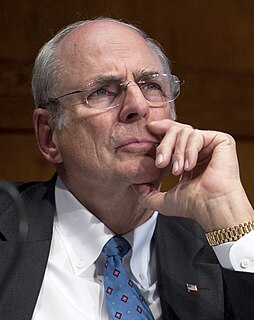
Norman (Norm) Ralph Augustine is a U.S. aerospace businessman who served as United States Under Secretary of the Army from 1975 to 1977. Augustine served as chairman and CEO of the Lockheed Martin Corporation. He was chairman of the Review of United States Human Space Flight Plans Committee.

Glass laminate aluminum reinforced epoxy (GLARE) is a fiber metal laminate (FML) composed of several very thin layers of metal interspersed with layers of S-2 glass-fiber pre-preg, bonded together with a matrix such as epoxy. The uni-directional pre-preg layers may be aligned in different directions to suit predicted stress conditions.
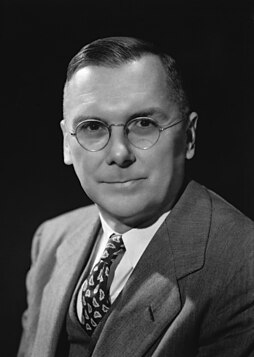
Hugh Latimer Dryden was an American aeronautical scientist and civil servant. He served as NASA Deputy Administrator from August 19, 1958, until his death.

The Scientific Committee on Antarctic Research (SCAR) is an interdisciplinary body of the International Science Council (ISC). SCAR coordinates international scientific research efforts in Antarctica, including the Southern Ocean.

William Frederick Durand was a United States naval officer and pioneer mechanical engineer. He contributed significantly to the development of aircraft propellers. He was the first civilian chair of the National Advisory Committee for Aeronautics, the forerunner of NASA.
Satya Atluri is a world-renowned Indian-American engineer, educator, researcher and scientist in aerospace engineering, mechanical engineering and computational sciences, who is currently the Presidential Chair & University Distinguished Professor at Texas Tech University. Since 1966, he made fundamental contributions to the development of finite element methods, boundary element methods, Meshless Local Petrov-Galerkin (MLPG) methods, Fragile Points Methods (FPM), Local Variational Iteration Methods, for general problems of engineering, solid mechanics, fluid dynamics, heat transfer, flexoelectricity, ferromagnetics, gradient and nonlocal theories, nonlinear dynamics, shell theories, micromechanics of materials, structural integrity and damage tolerance, Orbital mechanics, Astrodynamics, etc.
Boris Laschka is a German fluid dynamics scientist and aeronautical engineer known for his work in unsteady aerodynamics, in applied aerodynamics, in aeroelasticity, and by his participation in the development of several experimental, civil, and military airplanes, e.g. VTOL VJ 101, Airbus A300 and A310, CN 235 and N 250 (Indonesia) and Tornado aircraft.
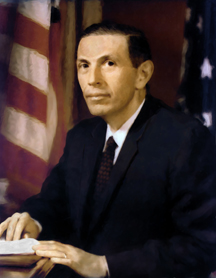
Alexander Henry Flax was the Chief Scientist of the U.S. Air Force (USAF) from 1959 to 1961, Assistant Secretary of the Air Force for Research and Development from 1963 to 1969, and the third Director of the National Reconnaissance Office (NRO) from 1965 to 1969. He was the director at a time when the second generation of imaging systems became operational and began to play a major role in United States intelligence during the Cold War. He oversaw major growth in NRO funding and personnel, the development of signals intelligence collectors from space, and the development of electro-optical imaging for US reconnaissance satellites.
A crack arrestor is a structural engineering device. Being typically shaped into ring or strip, and composed of a strong material, it serves to contain stress corrosion cracking or fatigue cracking, helping to prevent the catastrophic failure of a device.
William Rees Sears was a notable aeronautical engineer and educator.

Prof. Narinder Kumar Gupta, known as Prof. N. K. Gupta or Prof Narinder Gupta is a research scientist, educator, and engineer. Born 22 August 1942 in Mirpur, Jammu and Kashmir, India, is Professor of Mechanics at the Indian Institute of Technology in Delhi. Gupta works in the area of large deformations of metals and composites at low, medium and high rates of loading. His research stimulates the development of constitutive behaviour of materials, understanding of the basic mechanics of large deformation, design for crashworthiness of road and air vehicles, design for safety in defence applications and in design of metal forming processes.
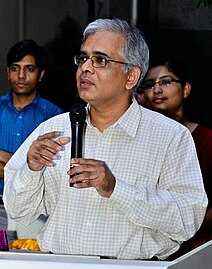
Shekhar C. Mande is a Structural and Computational Biologist. He did his M.Sc. in Physics from University of Nagpur. He holds Doctor of philosophy in Molecular Biophysics, from the Indian Institute of Science. Following his PhD, he joined Prof. Wim G. J. Hol as Post Doctoral Fellow at Rijksuniversiteit Groningen in the Netherlands. Since 2001, he was senior staff scientist at Centre for DNA Fingerprinting and Diagnostics. Between September 2011 and September 2018 He served as director at National Centre for Cell Science in Pune, India. Currently he serves as the Director General of the Council of Scientific and Industrial Research (CSIR)-cum- Secretary, Department of Scientific and Industrial Research (DSIR), Govt of India.
Paul Grundy was an eminent Australian engineer, who worked in the fields of structural and civil engineering, and was a long-standing lecturer and professor emeritus in the Department of Civil Engineering at Monash University.
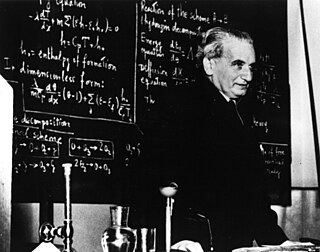
This is a bibliography of works by Theodore von Kármán.
Suryanarayana Srinivasan (1941–1999) was an Indian aeronautical engineer and the Director of the Vikram Sarabhai Space Centre (VSSC), known for his pioneering work in rocket science. He also served as the director of Satish Dhawan Space Centre and assisted A. P. J. Abdul Kalam in the SLV3 Mission as its deputy director. He was an elected Fellow of the Aeronautical Society of India and the Indian National Academy of Engineering. The Government of India awarded him the third highest civilian honour of the Padma Bhushan, in 2000, for his contributions to Indian space program.
The European Society for Structural Integrity (ESIS) is an international non-profit engineering scientific society. Its purpose is to create and expand knowledge about all aspects of structural integrity and the dissemination of that knowledge. The goal is to improve the safety and performance of structures and components.











